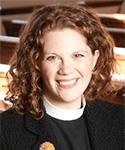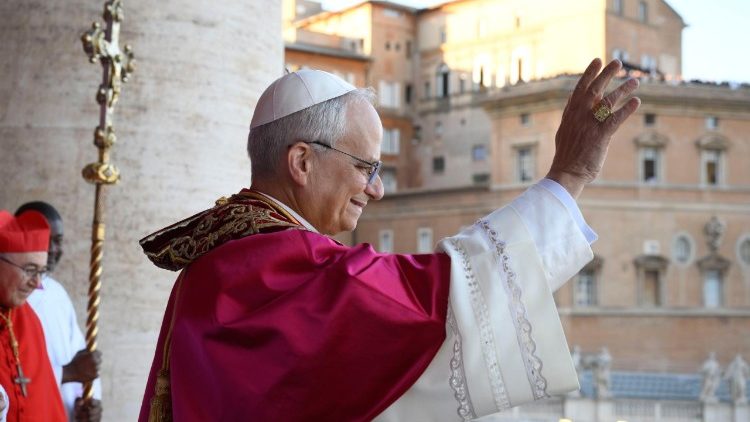"How could the Massachusetts Council of Churches be so disrespectful?"
My colleague's anger fairly exploded out of my computer screen. He had emailed me shortly after seeing me, while seated on the dais at a council gathering, looking down at my phone as a church leader spoke at the lectern.
Clearly, I was texting instead of paying attention -- and disrespecting the speaker in the process -- my colleague thought.
But I wasn't. As the leader spoke, I was listening intently and tweeting out her words, trying to amplify her message to a broader audience.
Ostensibly, the heated email was about my personal behavior, my actions as an individual. But as the wording indicated, my colleague equated my behavior with that of the organization.
His question wasn't about Laura Everett being disrespectful but the Massachusetts Council of Churches. To him, my behavior and the council's were one and the same.
However much he had misunderstood what I was doing, he had a point. It wasn't the first time I had messed up by denying or at least blurring my symbolic role as executive director of the Massachusetts Council of Churches.
In my two and a half years in the post -- my first senior leadership role in my ministry -- I have had to learn quickly that I am the "face" of this Christian institution. Like it or not, I represent the whole institution.
"Synecdoche" is a figure of speech in which a part represents the whole -- such as when I call my car my "wheels." Like the wheels of a car, the pastor or executive director is a part of the organization but also represents it in its entirety.
As the institution's "face," those who exercise Christ-shaped leadership invite and welcome others into the organization and its mission. But how do leaders do that? How can they think theologically about being the "face" of a Christian institution?
I have four suggestions:
- Own your charisma
- Get "right-sized"
- Include multiple "faces"
- Act as an icon
Own your charisma
Institutions both want and fear charismatic leaders. The English word "charisma" derives from the Greek χάρισμα (khárisma), meaning both a magnetism that elicits commitment from others and a divinely conferred gift.
When the angel Gabriel greets Mary, he describes her as "full of grace," or charis. As George Scheper notes in the Encyclopedia of Religion, the apostle Paul understands charisma as "the direct result of divine charis or grace."
Understood this way, charisma in Christian leadership is not something to be feared but a gift from God to be used in service of God's inclusive mission. God became flesh in a particular time and particular place in a particular body so that we might know God's universal love. Christian leaders are called, then, to use our particular charisms to draw in others.
Whatever their particular charisms, Christian leaders can introduce joy, humor and pathos into even the most highly structured, depersonalized organizations. Perhaps the most visible example of a Christian leader using charisma in the service of institutional reform is Pope Francis reshaping the "brand" of Roman Catholicism through his public persona.
Pope Francis is a Christian leader who understands his symbolic power. By washing the feet of female prisoners, paying his own bills and touching people whom many would consider unclean, Pope Francis is using his charisma and his position to show the world a glimpse of God's love.
Not many of us hold offices or lead institutions as prominent and as powerful as the papacy and the Vatican. But leaders abdicate our responsibility if we do not use our particular gifts and the power that comes from being the face of our institutions to attract people to our mission.
Get right-sized
But even as Christian leaders are called to use their gifts in service of the church, they must be careful to do so in the right way. To borrow a phrase from 12-step programs, the church needs Christian leaders who are "right-sized." The extremes do not work for institutional leadership.
When the leader is too big, a cult of personality can trump the institutional mission, as I learned years ago when I briefly served as a youth pastor, following the wildly captivating and popular "Rev. Jim." After he left, youth attendance plummeted, and after weeks of low turnout, I complained to the senior pastor.
"Jesus Christ himself couldn't get more than five kids to join the youth group after Rev. Jim," she replied.
Jim was too big. Inevitably, the focus was on him and not the mission. When he left, the mission died.
Conversely, a too-small leader is also a problem. Leaders who abdicate their public role and are afraid to exercise their legitimate power are leaders who are too small. By their actions, or inactions, they deny people a way into to the institution and its work.
Some clergy, whether by personality or formation, come to believe that smallness and meekness are occupational requirements for ministry. They shy away from exercising the powers of leadership, remembering John the Baptist's words, "He must increase, but I must decrease."
Those words from John 3:30 tell us the truth about God's sovereignty in our lives, but they do not tell us to step away from leadership. Those of us who have been taught to be "small" -- especially those whose very presence in positions of authority can make others uncomfortable -- need to make sure we fill the space necessary for leadership.
Getting leadership sized rightly is critical not just to the individual leader's tenure but to the institution's ongoing success. As Rev. Jim illustrated, oversized leaders leave little space for the mission to continue after they leave.
Include many faces
One of the most effective ways leaders can ensure that they are right-sized is to have others also serving as institutional faces.
My colleague the Rev. Bert Marshall, the New England Regional Director of Church World Service, is often greeted as the "face" of CWS. Whenever it happens, he invariably responds, "Well, we have a lot of faces, and you're one of them, too."
At the Massachusetts Council of Churches, we've experimented with adding more "faces" to represent us. I often ask board members to attend denominational meetings with me as "ecumenical delegations."
Having many faces has its benefits. At a practical level, it lightens the representational load on me. And when we show up as a delegation of five rather than one, it also makes our institution harder to ignore.
When we add more faces to our public image, we gain in important ways. With more faces representing us, we have a greater diversity of people and experiences that can draw and connect others to our institution and our mission of Christian unity.
Act as an icon
Traditioned innovation asks us to reach back into Christian traditions to find ancient ways to think about contemporary problems. There we find another powerful tool to help Christian leaders think about their role as their institutions' public face: the icon.
The church has grappled before with the proper role of images, especially during the iconoclasm of the early eighth century. Icons give the faithful viewer a means to look through the image to see and know something more of God.
Perhaps as Christian leaders, we are to be icons -- matter that people look through in order to know something more of God. Leaders must use their charisma to draw people not just to ourselves but, through us, to the holy mission of our institutions.
If people look at church leaders and see only our particular faces -- if they see only us -- then we risk becoming the idols the iconoclasts feared. Christian leaders must be visible, but we must also be certain that our "faces" point others toward God.












